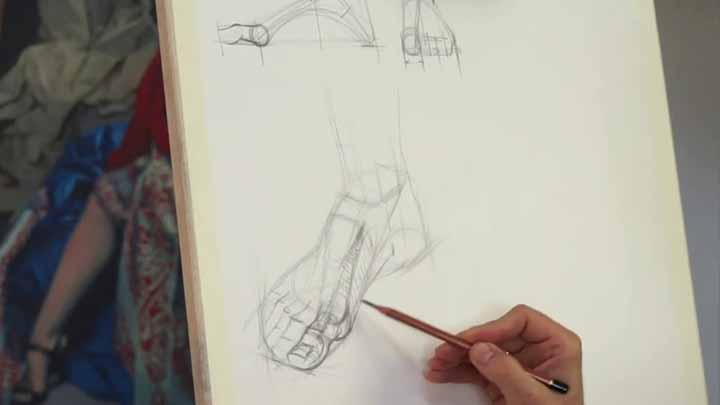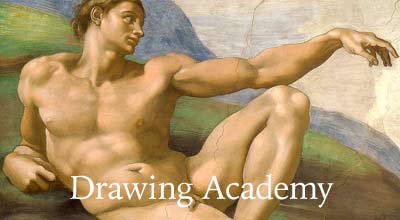How to Draw Feet

In this video lesson, we will draw a foot from different angles of view. First, we will examine the construction of a human foot, and then we will use that knowledge to draw a foot. The cross-section of a foot looks like an arch. The whole weight of a human figure rests on two areas where the feet touch the ground—the toes and the heels. The border between light and shadow of the second phalange of the big toe curves along its contour. The tendon and contours span upward from the big toe to the ankle. It is also good to depict the virtual planes of the foot. This makes easier to create an illusion of the foot's three-dimensional shape. The tendon that bridges the big toe with the heel bone creates an additional volume. The cross-contours go across several planes, every time changing their directions along those planes. Without such virtual planes it is difficult to depict all the complexity of the foot's surface. You may also notice that the volume of the foot forms a virtual cone with its wide part at the ankle and the narrow end at the big toe joint. At the same time, every joint of the other toes also plays an important role in the geometry of the foot. With the overall form of the foot in place, we can now work on small details. Every phalangeal joint can be depicted the same way as we did for the big toe. Such small-detail work is a bit tedious, but there is no other way to portray a foot in a realistic manner than patiently drawing all 12 joints of the remaining toes. Accuracy in small details here creates the full picture. The toenails rest on rounded toe-tips. We have to draw all nails, as well, because our creative task is to accurately and methodically to portray a foot. Coming back to the heel, you can notice that the heel-bone fuses with the big tendon at the back. The layer of fat that protects the heel bone at the bottom creates additional volume of the heel. This "fat pillow" is an important element of the foot. Its thickness is about 8 millimetres. The contours of the medial ankle follow the direction along the tendons that flex the toes. These tendons go around the bone's protrusion and spiral on the plantar side of the foot. At the top side of the foot, there are virtual planes that cover the tendons that extend toes. These planes have different angles and help to describe the foot's shape.



